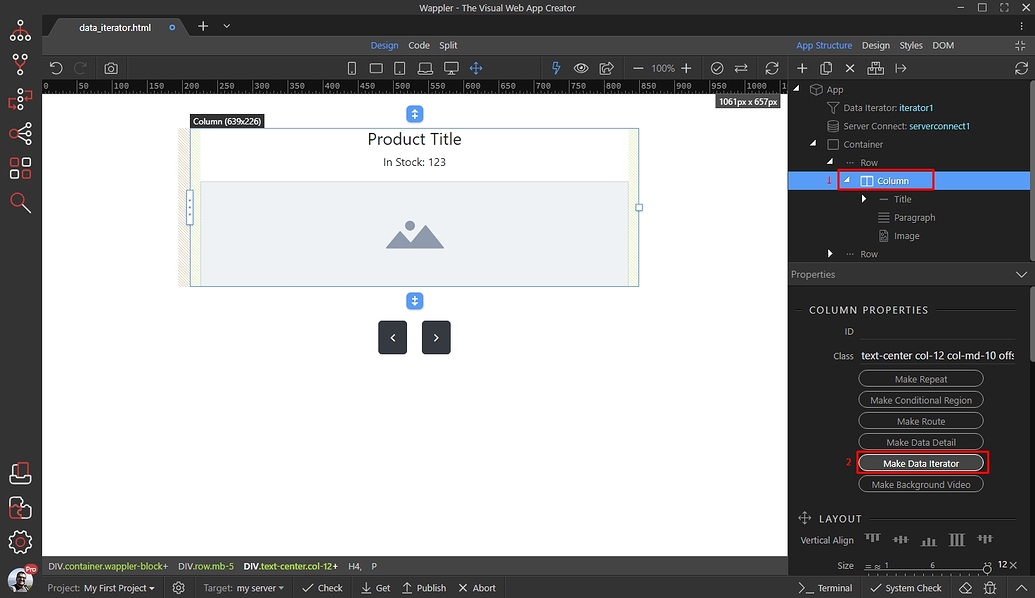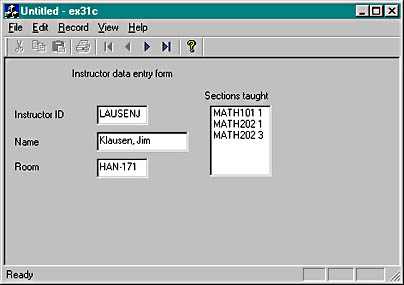

Ordinarily, I would just have done all this in Excel, but I'm currently dealing with such large recordsets (initially 135,000 ish) which is then pared down to 28,000 records (on which I then need to do the looping) that I wanted to do it all in Access. I think I can take it from here - you guys have seeded the flame which will hopefully lead to a roaring fire (interesting metaphor, I know). Dim rs As DAO.Recordset Set rs CurrentDb.OpenRecordset ( 'SELECT FROM Contacts' ) 'Check to see if the recordset actually contains rows If Not (rs.EOF And rs.BOF) Then rs.MoveFirst 'Unnecessary in this case, but still a good habit Do Until rs.EOF True 'Perform an edit rs.Edit rsVendorYN True rs ( 'VendorYN') True 'The other way to. Operation cancelled.

I really need to go home and read thru some of the Access programming books I have for assigning field data of a particular record to a variable. Dim rs As DAO.Recordset Set rs Me.RecordsetClone rs.MoveFirst rs.MoveLast rs.MoveFirst Do While Not rs.EOF 'do something here For Each fld In rs.Fields strfieldvalues strfieldvalues & fld. Dim fld As Field Set dbs CurrentDb Set rstCust dbs.OpenRecordset ('tblCustData', dbOpenTable) Set rstCall dbs.OpenRecordset ('tblCallData', dbOpenTable) FolderPath BrowseFolder ('Select Save To Location') If FolderPath '' Then MsgBox 'No Save To Location selected. EOF MsgBox ourRecordset ProductID ourRecordset. OpenRecordset ('ProductsT') Do Until ourRecordset.
#VBA RECORDSET LOOP THROUGH RECORDS WIZARD CODE#
I am happy enough using variables (such as an array) to hold all the field information for a record. Looping through a RecordSet using VBA The following code loops through our RecordSet: Sub RecordSetLoop () Dim ourDatabase As Database Dim ourRecordset As Recordset Set ourDatabase CurrentDb Set ourRecordset ourDatabase. To get started, I created an Access database with a personnel table, an output table, and a form with a button on it as shown below.Unfortunately I do because I need to compare each record to the next.
#VBA RECORDSET LOOP THROUGH RECORDS WIZARD HOW TO#
How to Implement this Recordset Loop Example? Finally, after we finish looping through all of the records, we will open the output table to view the results. Thus, I am looking to restrict my recordset to just a few new securityIDs. What I want to find is the New SecurityIDs that were not in last week's. Each week I get new data that is appended to the table. Every time we find a record where the person is from Texas, we will write this record to the output table. I am trying to create a query from a single table that has these two fields: PricingDate and SecurityID. In this example, we are going to loop through a set of personnel records. ' Open the table in normal view as read-only dataĭoCmd.OpenTable "output", acViewNormal, acReadOnly ' Only write record to output table if state = "TX" The MoveLast method moves to the last record. So if you are dealing with such then no need. ' Delete any existing records from the output tableĭoCmd.SetWarnings False 'Turn off warnings so we don't get popupĭbs.Execute "DELETE * FROM output", dbFailOnErrorĭoCmd.SetWarnings True 'Turn warnings back on Use the following Move methods to loop through the records in a Recordset: The MoveFirst method moves to the first record. This blog will help you in exploring the best resolution to fix MS Access error 3021 - no current record issue. Set rst = dbs.OpenRecordset(qry_string_1, dbOpenSnapshot, dbReadOnly) Qry_string_1 = "SELECT * FROM personnel " ' Select records from the personnel table

rst.MoveNext Loop 6.Loop without MoveNext When looping through records, it is easy to create an endless loop by omitting the line rst.MoveNext.
The following VBA example below shows you how to loop through a recordset in Microsoft Access. Use this construct for looping through Access recordsets: Do while Not rst.EOF If rstMyField <> Something Then The real loop exit condition. MoveFirst It is not necessary to move to the last record and then back to the first one but it is good practice to do so.

 0 kommentar(er)
0 kommentar(er)
